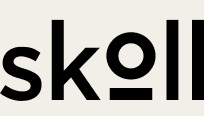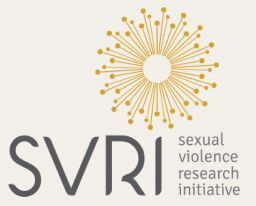First, sending out huge end-of-year love to many many millions who have suffered loss during this terrible and surreal pandemic. I want to share a special version of this for my amazing colleagues here at Meedan, who have been resilient and heroic in so many ways. It feels a bit indulgent to muse theoretical in these times, but as we are forwarding a strategy for the year ahead it feels important to chart some of the theory that grounds our planning across a global set of programs and products.
The past fours years have seen the conversation on the future of journalism move from the existential threat of evaporating revenues and failing business models to an even deeper threat, the viability of the fundamental journalistic act of meaningfully asserting a truth in an attention distorted, truth-inverted, peer-to-peer distributed, fully encrypted setting.
With this we have seen our work on content and source verification and fact-checking become central to emerging digital journalism practices. There has been understandable attention to efforts that seek to better parse and respond to disinformation, as a practice with projects such as Verificado, CrossCheck, and Checkpoint, and at an infrastructure level with efforts such as Global Disinformation Index, Journalism Trust Initiative, and Credibility Coalition. For all the successes that we have seen in individual projects, there is a sense that the inexorable rise of encrypted messaging networks and the continuing erosion of the human attention span demands that we re-think journalism at an infrastructural level.
Before describing what this might look like, a bit of context on the programs and practice that has contributed to this thinking.
At Meedan we began our work building verification software as a response to our experience curating and translating content from social sources during Arab Spring, when much of our team was then based in the Arab Region. In 2011, seven years before misinformation became the word of the year, our experience in Egypt showed both the importance of decentralized publishing and user-generated content and, too, the absence of methodologies, tools, and internet infrastructure for assessing and contextualizing this content. At the same time other orgs and companies, most notably Mark Little, Ainé Kerr, and the team at Storyful, began to put serious product energy behind this insight. Over the past nine years our cozy and geeky area of concern has morph into the juggernaut of the global, multi-sector, mis/disinformation industrial complex. We did not imagine that the tools, practice and theory of verifying, fact-checking, and annotating user generated media and claims would come to define much of the work of global civil society and would stand as one of the central challenges to the viability of the internet and with it, the promises of democracy, social justice, health justice, climate justice and, essentially, all the challenges of humankind which are impacted by equitable (accessible, available, localized, read/writeable, contextual, verifiable) information.
Make no mistake, the way the current incarnation of our digital communications and publishing environments have impacted the ways that our society uses language and constructs meaning is threatening every aspect of humanity - from governance, to climate, to human rights, to personal health. We are right to regard the failures of our information ecosystem as a big deal and we are right to attempt to frame responses that are structural.
In It feels to us as though we are again seeing from our experiences monitoring and responding into closed messaging networks, the beginning of a new type of journalistic practice.
Here is the rough arc that brings us to this point:
2011 Begin of our development of the open source Check platform to enable individuals, teams, and networks of partners to transparently collaborate to add context to digital artifacts.
2014 Work to formalize the processes and workflows that we bring to the trainings and delivery of event based initiatives. Expressed in our Pop-Up Newsroom initiative (with Dig Deeper Media), and deployed in Electionland, Verificado, CrossCheck, Checkpoint, and many other election monitoring efforts.
2016 Recognition that we need to consistently structure and make these annotations machine readable (structured data) by creating standards around the efforts- called for in a post 2016 Electionland blog post. Expressed in our Credibility Coalition initiative (with Hacks/Hackers).
2018 Our Verificado project (with Animal Politico and AJ+ Espanol) places closed network monitoring, 1:1 response, and memetic/visual expression of journalistic outputs into the most awarded collaborative journalism effort of the year.
2019 We took learnings from the Verificado project into the Indian election monitoring project Checkpoint led by Proto and involving dozens of media partners across India. For this project we received support from WhatsApp to code Check integration with the WhatsApp business API.
2019-20 We launched the first formal fact-checking program on WhatsApp with an initial network of 6 IFCN (International Fact-Checking Network) partners across India, Africa, and Brazil, expanding this pilot to 11 partners working around the world to model ‘tipline’ driven fact-checking on WhatsApp.
2020 Our Digital Health Lab was founded in 2018 to research the potential to address misinformation in the context of a pandemic, coining the term ‘misinfodemic.’ Our hypothetical work turned pragmatic at the onset of COVID-19 and launched a project connecting epidemiologists and public health experts with fact-checking orgs and media partners.
With all of these projects we have designed and built interventions that have helped to move forward the larger project of positively impacting the world through collaborative journalism and digital activism. I think there is at least as much causality as coincidence that has Meedan continually intersecting with the future.
So, let me try to describe an idea that feels as significant as the idea hatched in 2011, when we began building Check.
Perhaps the brick and mortar, and printed page, and the advertising and subscription supported web-based model of journalism all share the fundamental quality of being monolithic, one to many. The successful models of this stage in the history of human commercial endeavor, gig capitalism, are fundamentally just-in-time, just-in-place, just-in-context, demand-driven, and efficient.
It may be that we have to look in the mirror and admit that the practice of passively consuming news may itself be dated, and that modes and methods of journalistic practice that views the fundamental product of journalism as the article, or the listicle, or the page-served GIF is not productive, regardless how many clicks you might receive through a cleverly baiting or hyperbolically misleading headline. Maybe the future of journalism is information services, insights or assessments or fact-checked statements or way-finding or disinformation correcting artifacts that can be accessed and shared, forwarded, translated, re-contextualized, and improved through 1:1, just-in-time, on demand journalism that can be requested and delivered via closed messaging networks. And, just like Google has amassed great power simply by knowing where people are looking for answers, the effective media companies and independent journalists of the world are going to recognize that their role as a provider of information will, in this new era, place them as the recipient of questions, insights, rumors, and tips that are the real coin of the realm in the attention/search-driven information economy.
It must be said that there are many remarkably great and brilliant people that have been singing the value of reader-driven news agendas for years. Jennifer Brandel is my favorite, this post would be infinitely less valuable if I did not say you should read everything she writes.
A future that has media companies or journalists themselves owning their full content and data cycle from user’s queries and questions to structured data outputs from their journalism - whether that is a fact-check or a movie review - is perhaps a more optimistic, and more empowering twist on the future of journalism than we have come across recently. These user queries and indexes of historical content along with the AIs/tools for structuring, clustering, matching these to incoming/new queries and content might point the way to a journalism that does more to serve our information needs than our attention cravings. And in these imperiled times, we can use all the help we can get with our ambient and proximate information way-finding.
We are on the cusp of new information access and distribution infrastructures that will make Buzzfeed Listacles as incomprehensible to our grandchildren as a fax machine is to our children, and working on this might get us past both forms of journalistic dread - the business model and the disinformation - if, that is, we can accept the future that is on its way and have the resolve to create it in a form that is more hospitable credibility and authenticity and less so to those who seek to do harm to people, ideas, and societies.
We think this calls for new infrastructure that helps journalists to serve as context brokers for us as we attempt to navigate into a future where Aunt Mandy is the journalist and publisher. For the past few hundred years we have had the luxury of enabling publishers to proxy credibility and to provide the context needed to make sense of the news, the internet has proven incredibly adept at scaling up content and incredibly poor at carrying context. We at Meedan are committed to working with our partners across the range of global fact-checking organizations, media companies, public health journalists, investigative reporters, election monitors, content moderation advocates, and human rights activists to increment our way toward building out products and programs that model the potential for structured data, structured context, and human-in-the-loop AIs to improve our world. We are hoping the year ahead is foremost one of healing - from the pandemic and failings of our media and information ecosystems alike.
Wishing you all more health, peace, and context in the year ahead.
Dec 18 2020 EAB
We collaborated with 53 partner organizations worldwide to design and carry out our 2024 elections projects. We extend special gratitude to our lead partners in Brazil, Mexico and Pakistan, whose work we highlight in this essay.
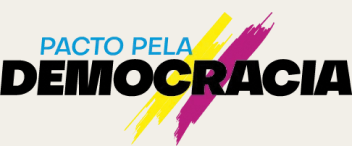
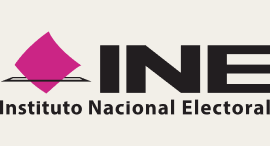
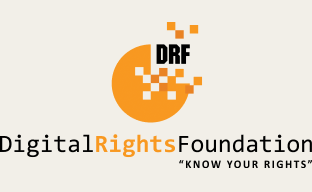
The 2024 elections projects featured in here would not have been possible without the generous support of these funders.
